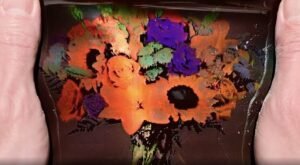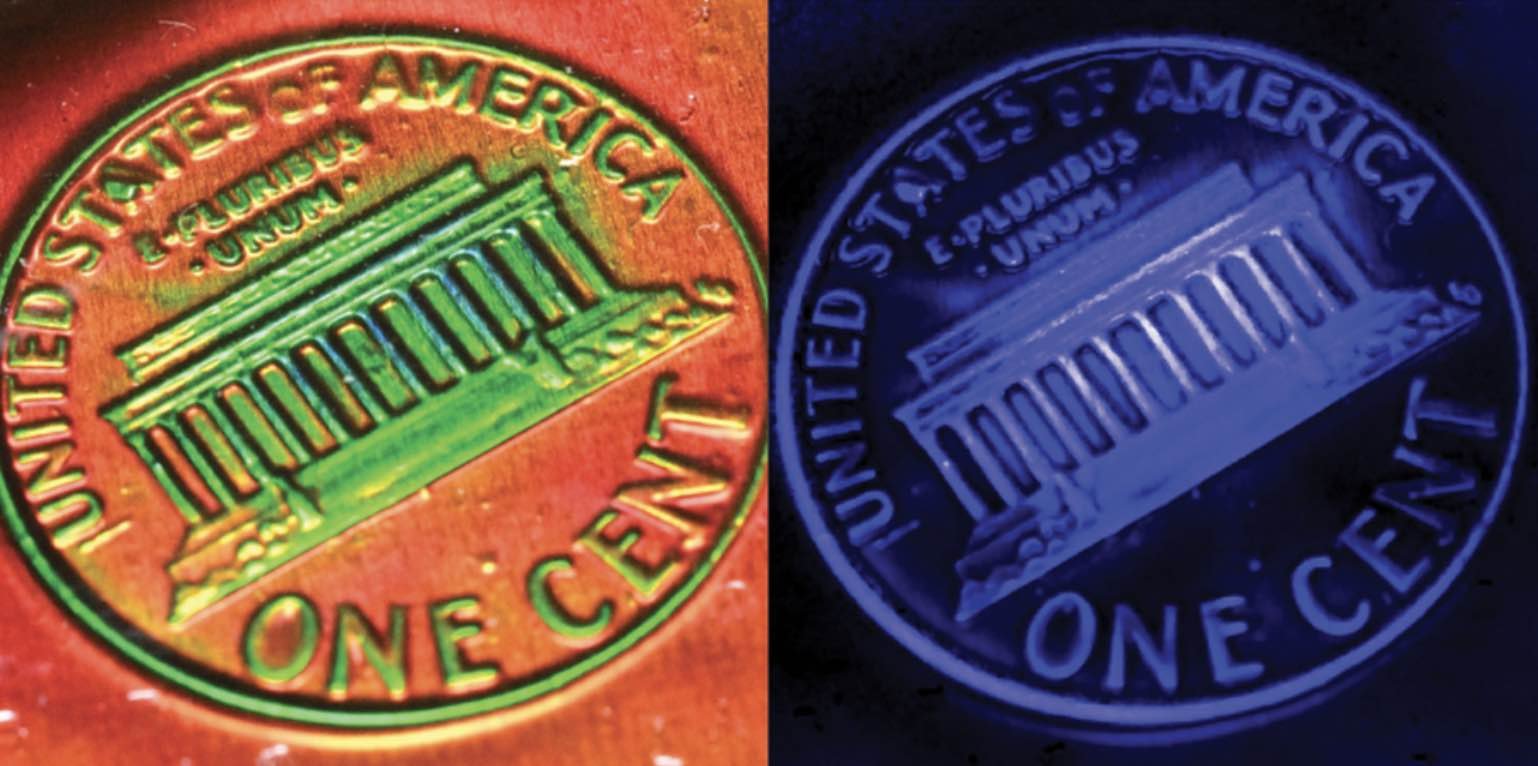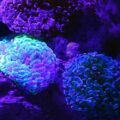Researchers at the Massachusetts Institute of Technology (MIT) have created a new method of producing imagery with a range of unique color-changing properties, which they say combines 21st-century holographic technology with a 19th-century photography technique.
The MIT scientists were recently able to print large-scale images of flower bouquets onto an elastic material that transforms the colors and wavelengths of light that are reflected once it is stretched. The result of this unique photographic printing technique is that the images appear to change shades from warmer to cooler colors as the unique, pliable film is stretched.
Similar effects were successfully achieved with detailed images of objects that included coins, berries, and even a human fingerprint. The MIT now says that they have created the first fully scalable technique that allows the production of large printed materials possessing “structural color,” which they define as color properties determined by the microstructure of the material itself, as opposed to pigmentation or dyes.
According to Ben Miller, a Ph.D. candidate in the Laboratory for Bio-Inspired Photonic Engineering in MIT’s Department of Mechanical Engineering, the scalability of the materials his research team produced requires being able to control structures on the nanoscale level. Succeeding at this will allow the use of such materials in a wide range of potential applications, which might include robotic skins with touch sensory capabilities similar to human skin, and other advanced touch-sensing technologies or devices with applications in augmented reality.
“It’s a big space we’re looking at now,” Miller said in a statement.


Of equal intrigue is that this new photo printing technique resulted from combining modern hologram technology with a 19th-century photography technique, invented by a former recipient of the Nobel Prize in physics.
Miller recently said that the idea for this unique material partly had its origins in a visit to the MIT Museum, where he visited the facility’s current exhibit on holography.
Miller said that it struck him how holography mimics the ways nature produces structural color.
“I realized what they do in holography is kind of the same thing,” Miller said. Following up on this, Miller began reading about Gabriel Lippmann’s studies on the phenomenon known as interference in the 1800s, an effect that arises from the superposition of two separate systems of waves. Lippman went on to receive the Nobel Prize in Physics in 1908 for his innovative use of the interference phenomenon to create color photography, an achievement for which he still best remembered. Lippmann, through a somewhat complicated process, was nonetheless able to create structurally colored images of objects by exposing an emulsion made of small photosensitive grains that, when exposed to light, could be reconfigured in accordance with the wavelengths of light they were exposed to.
In a similar fashion, modern holography relies on molecules that react to photons in ways that form colored effects capable of producing unique imagery possessing three-dimensional characteristics. Based on Lippman’s early photographic experiments, Miller now wondered if modern hologram technology might not have similar applications, albeit without the same laborious effort that Lippmann’s 19th-century experiments required. Specifically, Miller decided to see if images possessing structural coloration similar to Lippmann photography could be produced in a large-scale format.
Enter Mathias Kolle, an associate professor of mechanical engineering at MIT whose specialty is in bio-inspired optics, optoelectronics, and materials science. Kolle is currently the head of MIT’s Laboratory for Biologically Inspired Photonic Engineering, which studies ways that the natural coloration properties of various kinds of materials can be reproduced in the lab.


“A lot of coloration seen in nature and in our everyday environment is based on micro- and nanoscale material structures,” Kolle explained in an email to The Debrief. “Intuitive examples are soap bubbles or oil films in a rain puddle.”
As Kolle notes, the color in such natural instances is a result of the way that light waves from different surfaces close to each other (such as the inner and outer surfaces of the soap bubble in the example Kolle provided above) interfere in either constructive or deconstructive ways. Kolle likens this to the way that wakes made across the surface of a lake by two different boats may result in higher waves in one instance, while the other wake produces shorter waves.
Kolle and the MIT research team employed a conventional projector to beam images that included flower bouquets—not unlike those Lippmann used in his original experiments—onto transparent film with holographic properties attached to sheets of aluminum. Within just minutes, the team had succeeded in producing very detailed, large-format images; a process that would have required days in Lippmann’s era.
One of the most intriguing aspects of the recent research involves the way that its structural characteristics change on the nanoscale level as the material is stretched. As these tiny structures reconfigure, the wavelengths of light they reflect vary. This is partly due to the material’s sensitivity to strain, the application of which induced a number of changes in color and other effects.
The team also discovered that the unique material could have applications in the projection of hidden imagery. By tilting the film at an angle, the material’s nano-structural properties reflected light in unique ways, which included the reflection of infrared light from images created from red light exposure. This means that by stretching the material, any “secret” invisible images that would normally reflect light only in infrared wavelengths would be revealed, now with a red coloration.
Kolle notes that this unique property of the materials his team produced “could encode messages,” along with other potentially beneficial applications.
The MIT team hopes to explore ways materials like these could find use in a wide range of applications, which might include color-changing bandages that could offer simple visual indications of pressure changes when treating various disorders.
For Kolle’s part, the usefulness of materials like these is already evident, and as far as exceeding the abilities of their 19th-century predecessors.
“Nowadays holographic materials are very good,” Kolle told The Debrief, “and it only takes a few minutes or even just seconds to form a structure in them when exposed to light.”
Elsewhere, Kolle summarized things a bit more bluntly–and humorously–in a recent MIT press release announcing the new discoveries.
“Lippmann’s materials wouldn’t have allowed him to even produce a Speedo,” Kolle stated.
“Now,” he added, “we could make a full leotard.”
The MIT team’s paper, “Scalable optical manufacture of dynamic structural colour in stretchable materials,” was published in the journal Nature Materials, and can be found online.
This article was updated to include additional quotes shared with The Debrief by Professor Mathias Kolle about the MIT team’s research.
Micah Hanks is Editor-in-Chief and Co-Founder of The Debrief. Follow his work at micahhanks.com and on Twitter: @MicahHanks.

